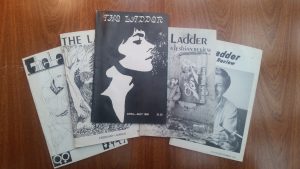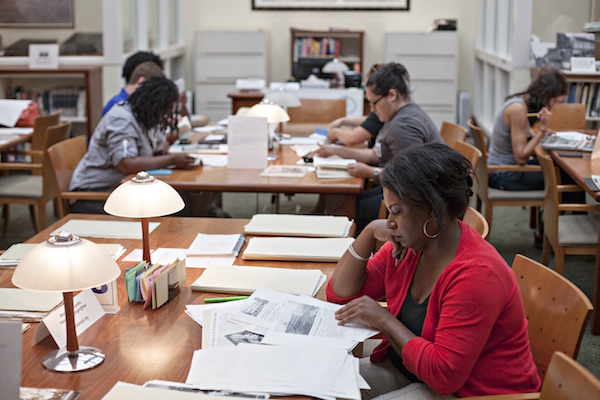By Vincent E. Slatt
The Rainbow History Project (RHP) was created in 2000 by a group of local activists interested in researching the history of the Washington metropolitan area LGBTQ communities. The lack of documentation of our history and our lives was the chief obstacle they encountered. Immediately that team started collecting documents, recording oral histories, and mapping the places and spaces where we’ve lived our lives.
 Now, 17 years later, we have an ever-growing collection of materials available for research at our archival partner, the Historical Society of Washington, D.C. In addition to paperwork from icons like Barbara Gittings or Lilli Vincenz, there is documentation on The Gay Women’s Alternative, the Furies Collective, and many other other aspects of both both women’s studies and queer studies. Chief among these collections is our pamphlets, publications, and periodicals.
Now, 17 years later, we have an ever-growing collection of materials available for research at our archival partner, the Historical Society of Washington, D.C. In addition to paperwork from icons like Barbara Gittings or Lilli Vincenz, there is documentation on The Gay Women’s Alternative, the Furies Collective, and many other other aspects of both both women’s studies and queer studies. Chief among these collections is our pamphlets, publications, and periodicals.
The Ladder, a feminist journal created by The Daughters of Bilitis published many articles written by D.C. lesbians; Nancy Tucker–the founder of The Washington Blade–donated many of her own copies of the magazine to us. We also have issues of titles published in D.C. like Habari Daftari: The Newsmagazine of the National Coalition of Black Gays and Lesbians as well as WoMo: Women’s Monthly. Neither of these titles is still published, but anyone interested in learning about our community in the 1980s and 1990s would find these essential reads. Have you heard of Cruise? Or Women in the Life? How about olde ones like Magnus, Vector, or The Gay Alternative? If you’re interested in our struggles from the 1950s-1960s, be sure to read our copies of The Mattachine Review. Also, if you ever feel like you’re the only queer socialist you know, be sure to read Coming Out Fighting: The Newspaper of the Lavendar and Red Union to see what the communists in our community were demanding in the early 70s.
In addition to those titles, we’ve also managed to save various Pride Guides from D.C. Black Pride, Baltimore Pride, and, Capital Pride, as well as many issues of popular magazines like Out, Metro Weekly, and, of course, The Washington Blade. Our most recent addition to the collection is 19 back issues of Tagg Magazine, including copies of Tagg Rehoboth. Already in its fifth year of operations, Tagg has already created an impact worthy of its place in our lives, collective memory, and in our archives. We view Tagg as an important chronicle of our community’s most recent history and are glad to receive these issues and look forward to many more.
RHP is always looking to engage with community members interested in donating materials or volunteering their time to track our history. Please contact us and get involved soon: www.rainbowhistory.org.


